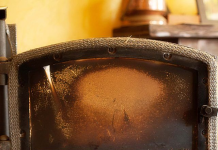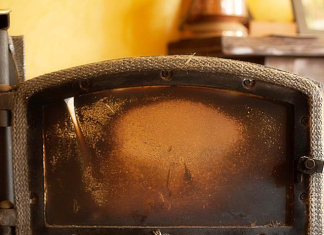Lead paint can cause many health problems to the occupants living in a building painted with lead paint. It is a danger to children and pregnant women. It causes learning disabilities, risk of renal and heart disease. You should consult Lead abatement professionals to help you assess if your paint has lead. If you have paint that contains lead, you can remove the lead or look for a subcontractor to do the work. Here are 5 Ways To Remove Lead Paint:
- Encapsulation.
Encapsulation is the most affordable and most comfortable method of removing lead paint. It involves replacing the lead paint with a specially made paint that forms a watertight bond and covers the lead- paint. If you open your windows and doors, the paint layer will wear off.
2. Enclosure.
The enclosure method involves covering an old surface with a new surface. You can put a new drywall or cover window ledge with an aluminum layer. If you remove the covered area, you will have problems dealing with the exposed lead-painted surface. You can use plastic tapes to cover heating openings.
3. Removal.
There are several approved methods of removing lead paint on the surfaces. You can use wire brushing or using a wet hand to scrap with liquid paint removers. However, a contractor might choose to use damp sand surfaces. They must use an electric sander equipped with a high-efficiency particulate air filtered vacuum to remove the lead paint. Additionally, they can strip off the lead paint by using a low-temperature heat gun and hand scraping. Wear a respirator mask to protect yourself.
You should not use rough blasting and power washing methods without a means to trap water and paint chips to remove the paint. Do not use the open frame method and machine sanding without high-efficiency filters.
4. Replacement.
This method involves taking out the surfaces and features that have lead paint and putting in new ones. You can install new doors, windows, and other affected surfaces. It offers a permanent solution to getting rid of lead-based paint.
5. Do nothing option.
If the lead-based paint in your house is in a good state and not causing any harm, you can decide to leave it. You should ensure you do not have children living in your house or visiting you frequently as it can harm them. However, it would be good to inform the buyer about the lead-based paint when selling the home.
If the paint is peeling and you can have children in your house, you need to start cleaning up as you wait for the paint to be removed. Clean floors, windows with warm water and soap to reduce lead harm. You should wash your children’s hands frequently and prevent them from chewing window sills.
Bottom line.
Lead paint in your home can cause health problems to you and your family. Although if the paint is in good condition, you can repaint the surfaces. If it is peeling, you can quickly inhale the lead from it, which can harm your health. You should contact professionals from your area to help you get rid of the lead-based paint.









